How to plant roses in pots: a simple guide for growing these blooms in containers
Learn how to plant roses in pots successfully for a beautiful patio display this summer
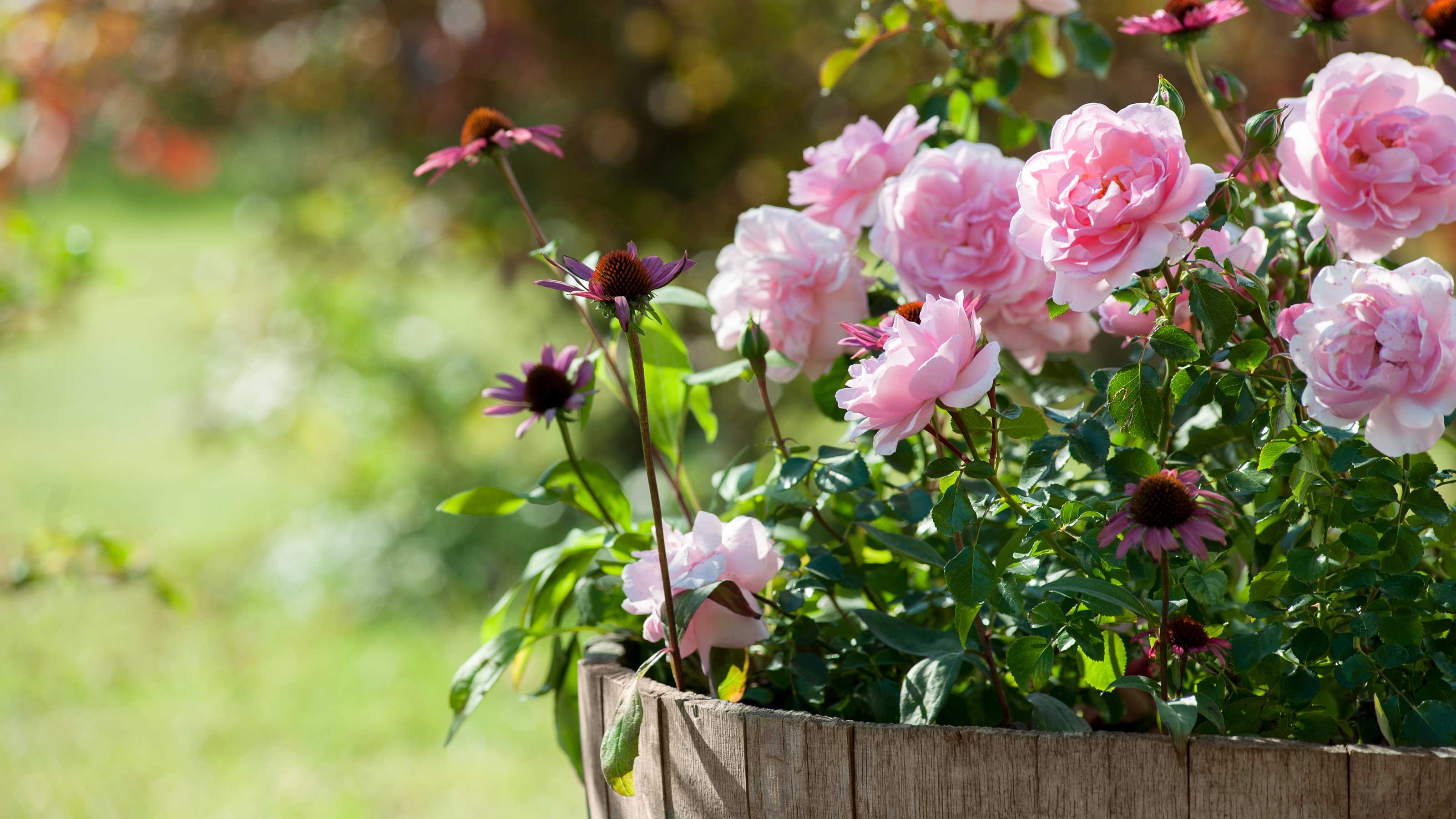

If you want to add summer color and fragrance to a patio or deck, then our tips on how to plant roses in pots may come in handy.
These beautiful blooms are a well-loved favorite, and you don't have to have acres of space to grow them. With the right varieties and a few pretty containers, you can fill even the smallest of gardens with their romantic, whimsical charm and delicious scent.
Roses care is more straightforward than you might think, too, once you've got the know-how. But with container growing, there are a few tips to take on board for the very best results – our guide explains all.
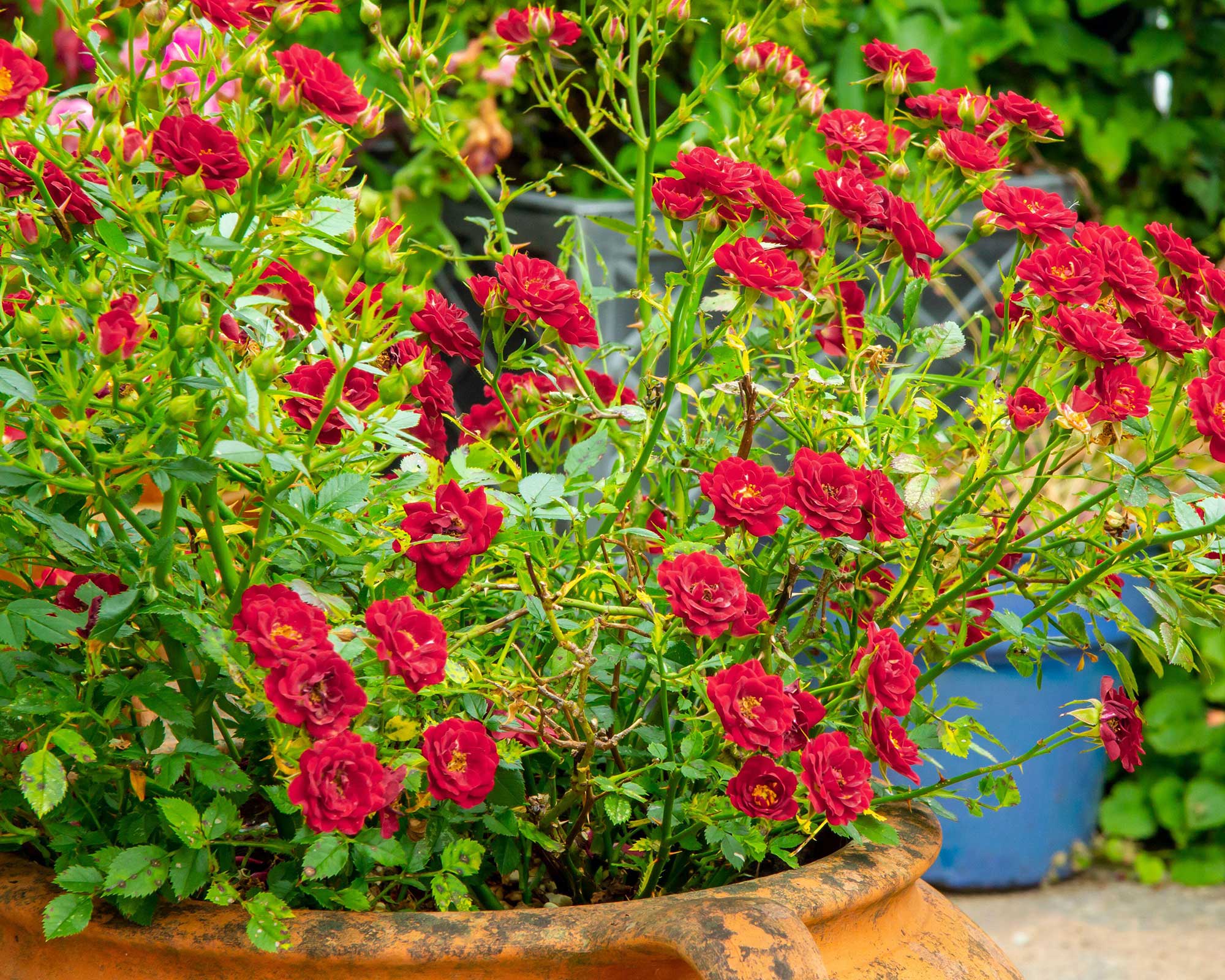
A pot of roses will instantly lift a patio space
How to plant roses in pots in 6 simple steps
John Negus, a gardening expert from Amateur Gardening, shares his step-by-step tips on how to plant roses in pots.
- Choose a planter of a decent size that can comfortably accommodate all the roots of your rose plant. Place it in its final position as it may be too heavy to move once planted up – ideally somewhere that gets sun for at least half the day. Cover the drainage hole with 3in (8cm) of crocks or stones and sit the rose, in its pot, in the center.
- Mix a nutrient-rich potting compost with mycorrhizal fungi (for instance, John Innes potting compost No3 and Rootgrow). You can also add 10–20% multi-purpose or well-rotted manure for added richness. Work it into the gap between both pots and firm it gently. Carefully remove the potted rose and tap it from its container. Place the root ball into the hole you have made in the larger pot and add a little more compost.
- Plant it at the same depth at which it was previously growing. Make sure that the compost surface is about 2in (5cm) below the rim of the pot, for watering.
- Stand the pot on 'feet' to ensure that surplus moisture freely drains away. After planting, water copiously so that roots are in close contact with the compost.
- Pruning roses should normally be done in late winter to early spring. Shorten the main stems by half and side shoots to two buds. Remove crowded stems from the middle of the bush.
- Containers dry out quicker than flower beds so need more frequent watering. Water your potted roses freely in dry spells and fertilize plants with a high-potash liquid feed weekly from late spring to early fall.
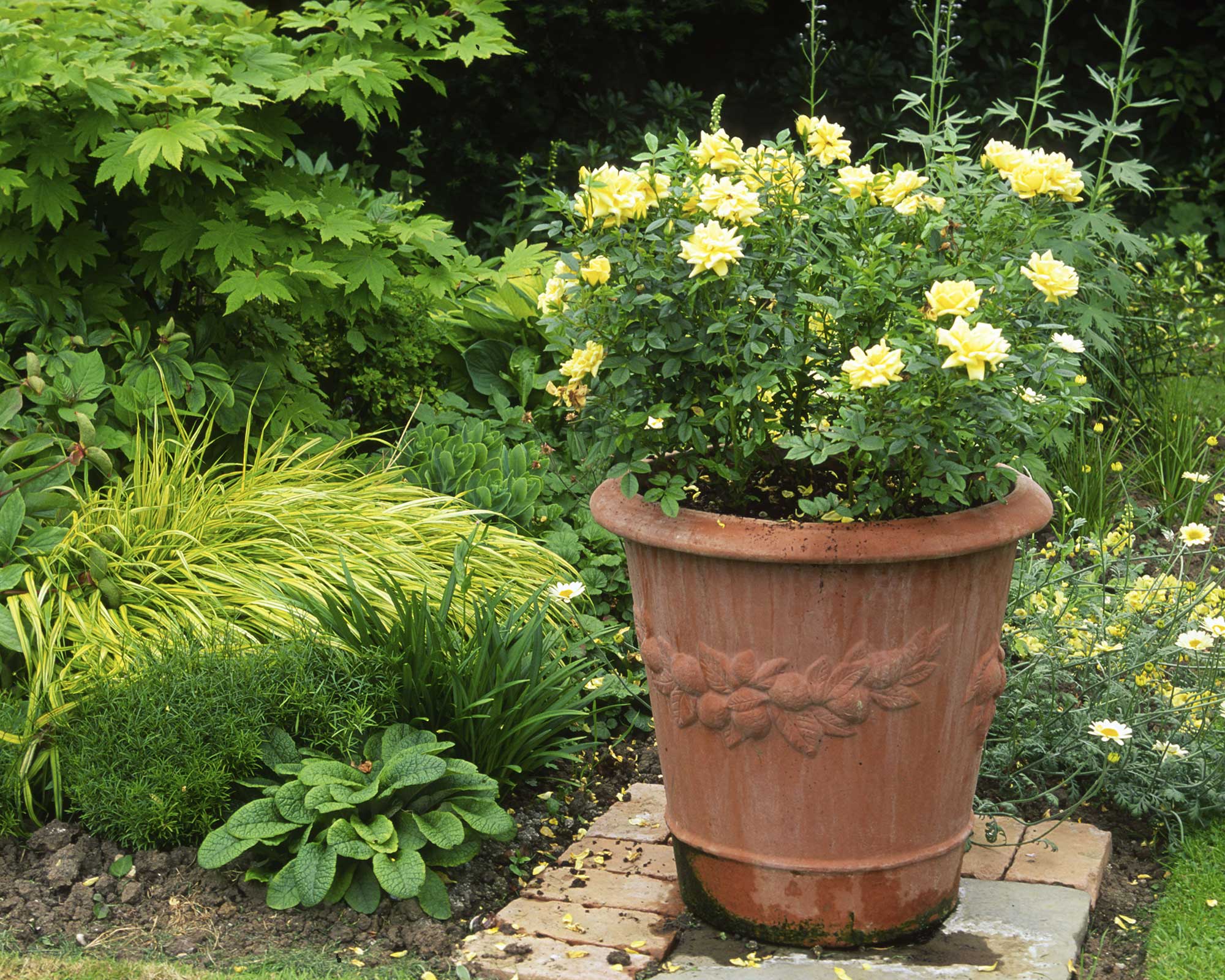
Choose a good-sized pot for your rose
When is the best time to plant a rose in a pot?
If you've bought your rose in a pot, it can generally be planted at any time of the year. Avoid doing so during periods of drought or frost, however. Planting bare root roses is best done from late fall to mid-spring.
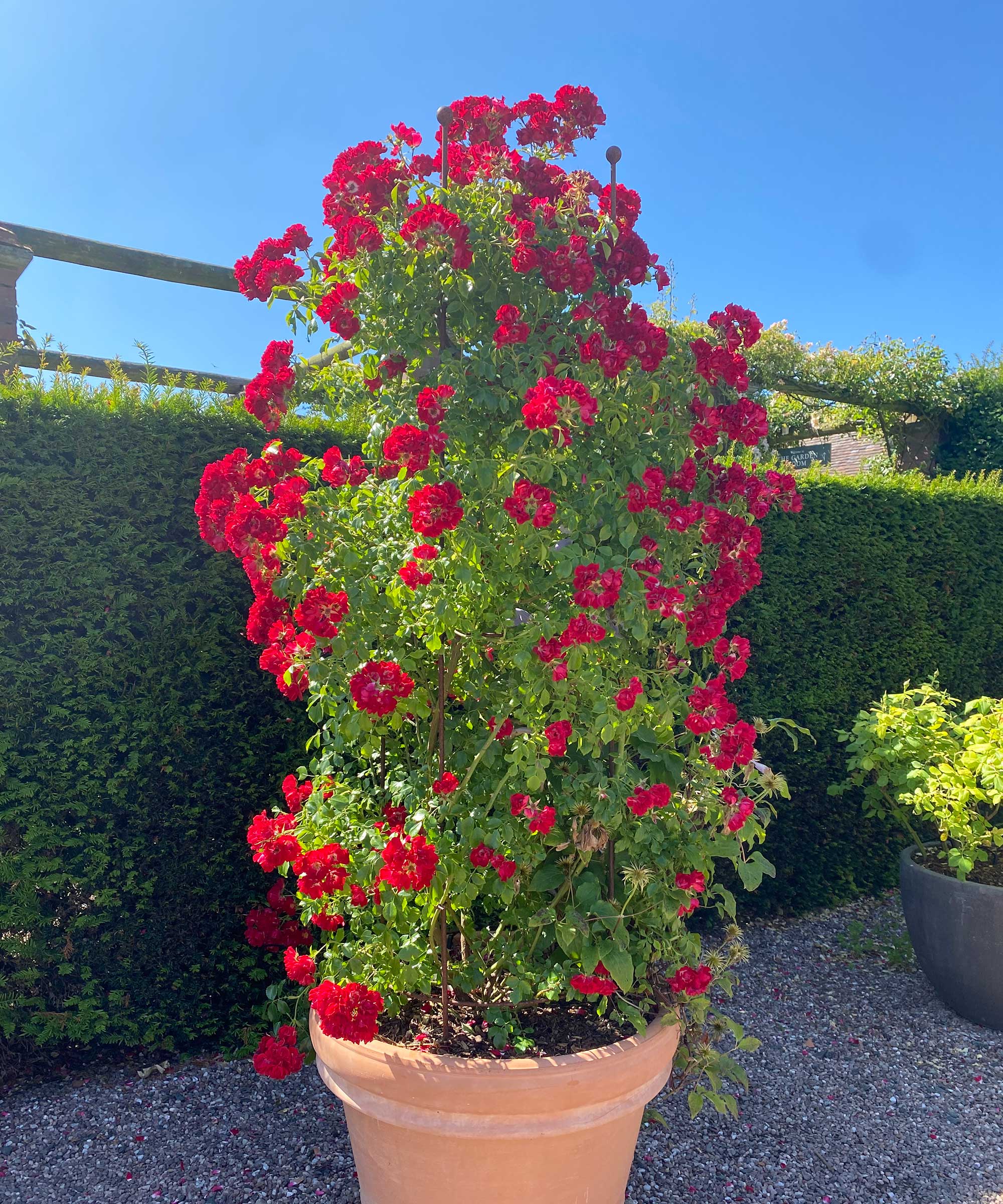
Roses can usually be planted at any time of the year
What are the best types of roses for containers?
Not all types of roses thrive in containers, as they need a deep root run.
'You could try hybrid tea varieties, but I suspect they will not do terribly well,' says John. 'The best roses for containers are the patio and miniature types, which can be grown in small but deep pots – 9–14in (23–35cm) deep. You could also try less vigorous and climbing roses, but use larger containers with a minimum depth of 12–18in (30–46cm).
'The RHS recommends the following as its top five roses for containers: 'Nice Day' (patio climber), 'Sweet Dream' (patio and also suitable as a standard), 'Magic Carpet' (groundcover), 'Laura Ford' (patio climber) and 'Robin Redbreast' (miniature or ground cover),' John continues.
'I would recommend looking in a catalog to choose the varieties you like. David Austin recommends English roses for container growing and there are many varieties on the website.'
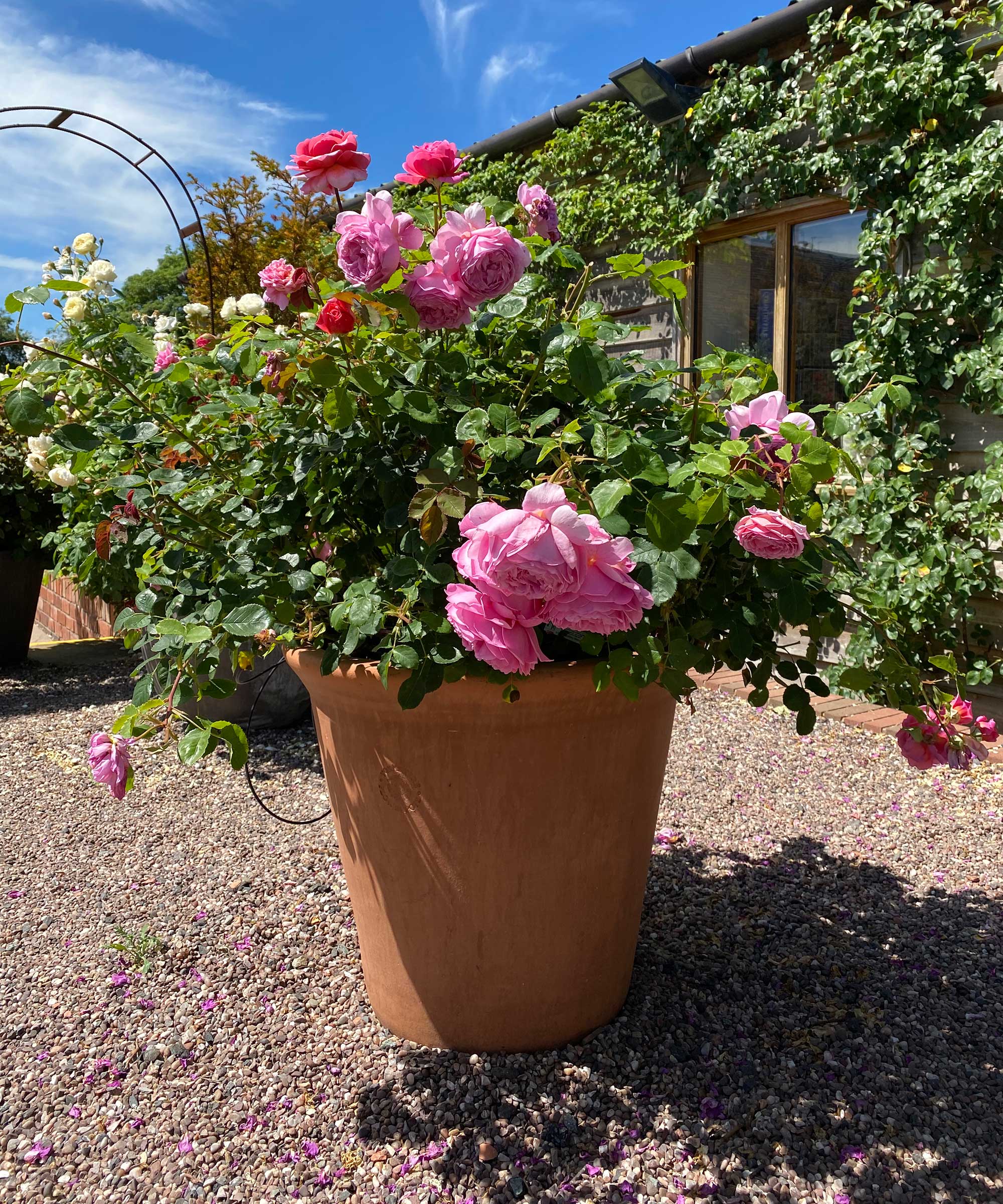
Look for varieties that are suitable for containers
How do you prepare potted roses for winter?
Roses are dormant in winter and generally unaffected by frosts, but if yours are still flowering, they will appreciate a little protection.
John suggests wrapping two layers of bubble plastic around the pots and covering the compost with a 4in (10cm) layer of composted bark to encourage strong growth the following year. In spring, remove the top 4–5in (10–12cm) of compost and replace it with a nutrient-rich compost.
Whether your roses are still flowering or not when temperatures drop, it's a good idea to site the pots somewhere sunny and sheltered – along a garden wall, for instance. Ensure each is on pot 'feet' so that excess moisture drains away.
If you can only find an exposed site for your potted roses, and they've finished flowering, you may wish to cut them back by a third of their size in fall. As the David Austin team explains, this can help prevent 'wind rock', which is where wind loosens roses at their base from the soil.

The garden was always a big part of Holly's life growing up, as was the surrounding New Forest where she lived. Her appreciation for the great outdoors has only grown since then. She's been an allotment keeper, a professional gardener, and a botanical illustrator – plants are her passion.
